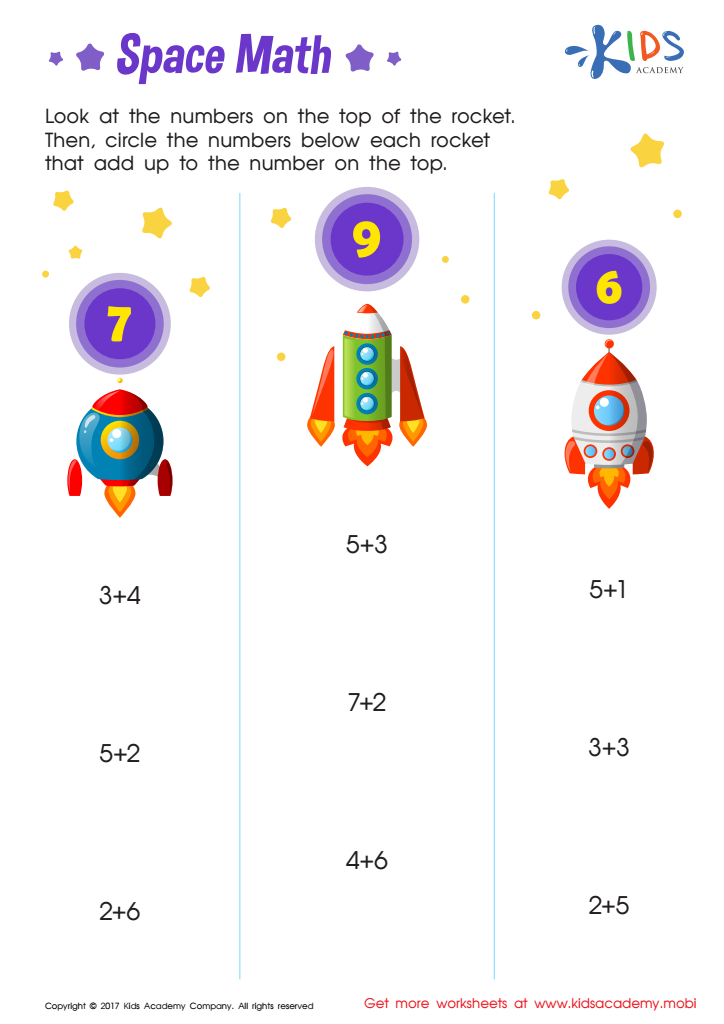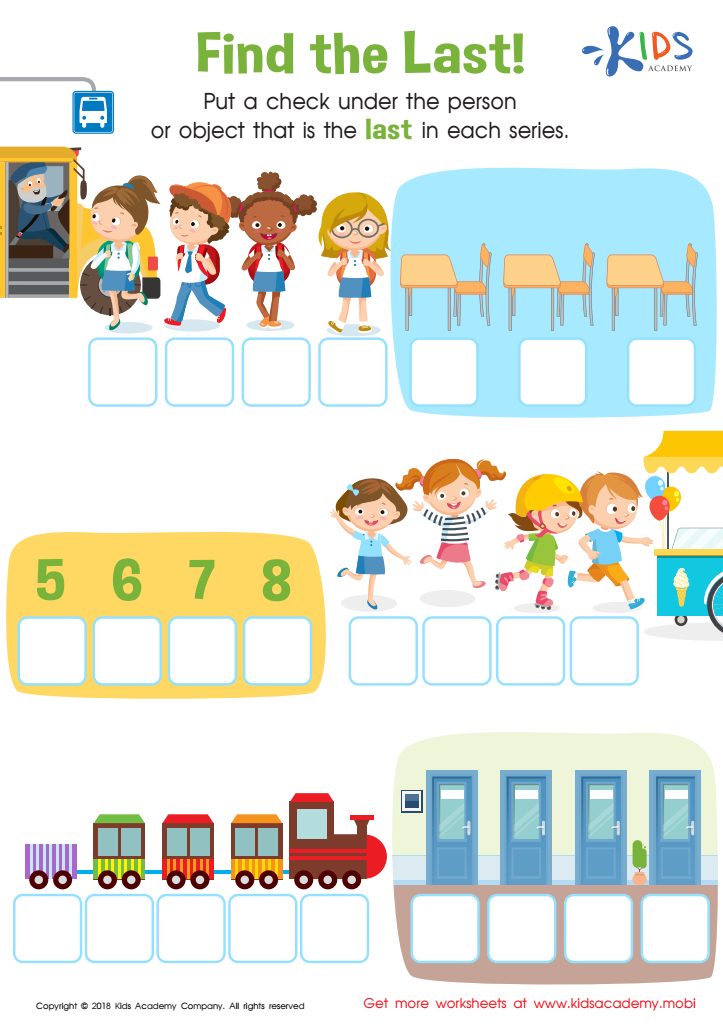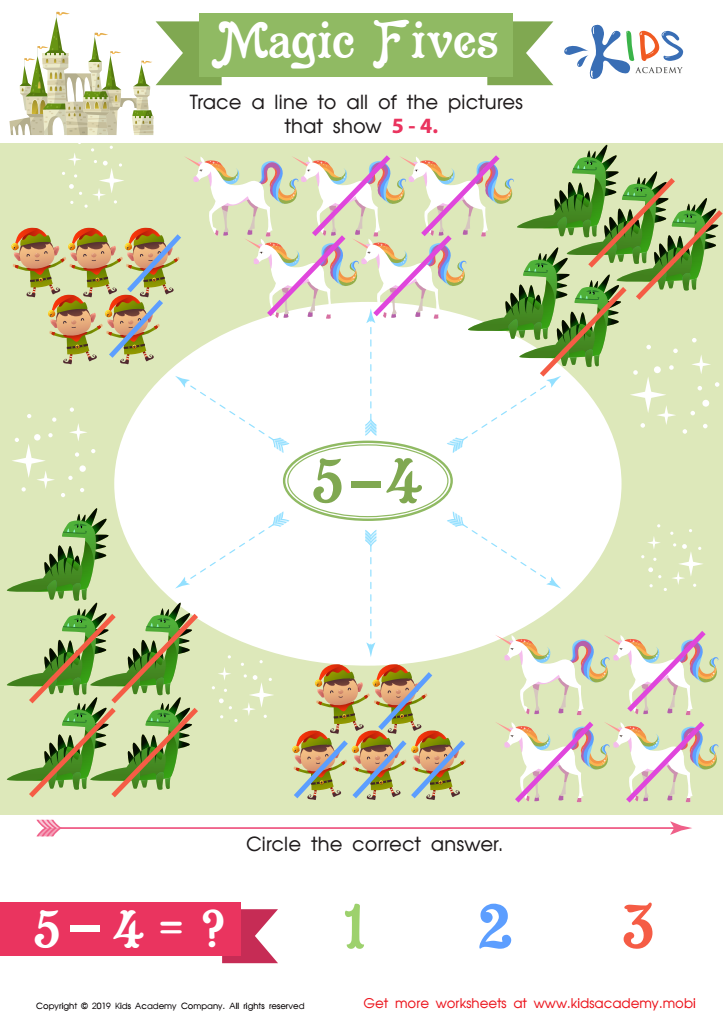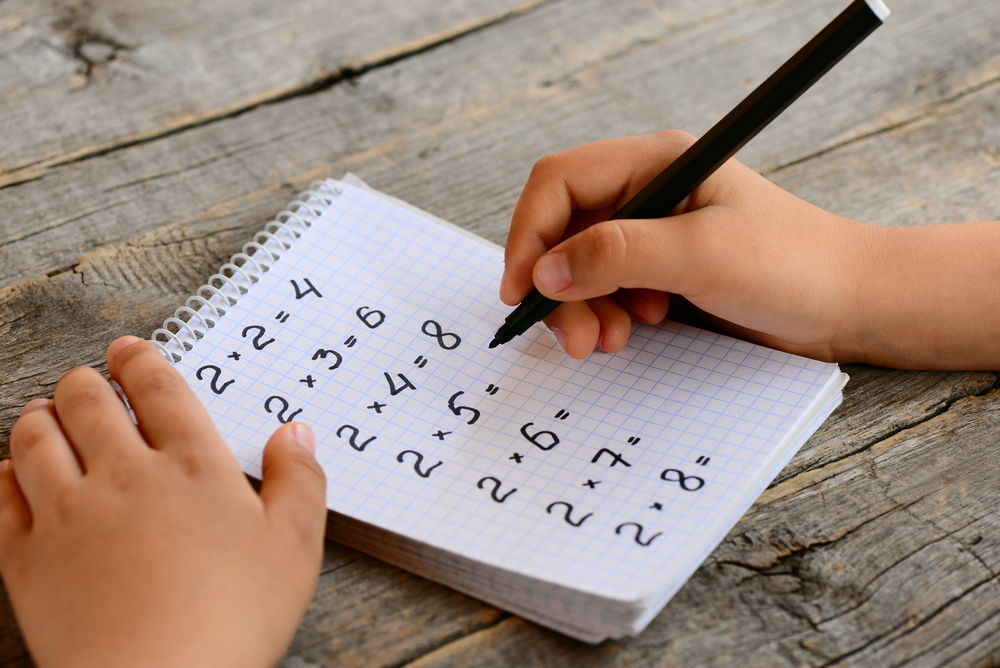Understanding patterns Normal Math Worksheets for Ages 3-4
3 filtered results
-
From - To
Discover the joy of learning with our "Understanding Patterns Normal Math Worksheets for Ages 3-4." Designed to captivate young minds, these worksheets introduce the fundamental concept of patterns through engaging activities. Through vibrant pictures and simple exercises, children enhance their cognitive abilities, logical thinking, and problem-solving skills. Each worksheet nurtures a love for learning by seamlessly blending education with fun. Give your child a head start in math by exploring patterns, as these skills form a crucial foundation for future mathematical understanding. Create lasting learning experiences that will set them up for success with our expertly crafted worksheets.


Addition: Space Math Worksheet


Find the Last! Worksheet


Magic Fives Worksheet
Understanding patterns in early math education is crucial for young children aged 3-4 as it lays the foundational stone for various cognitive and academic skills. At this tender age, children's brains are developing rapidly, and grasping patterns helps enhance their ability to recognize and predict sequences and relationships within their environment. This skill is not limited to mathematics but extends to listening skills, language development, and critical thinking.
When parents and teachers introduce patterns through fun and simple activities like sorting shapes, coloring alternating sequences, or arranging objects, children learn to notice and attribute order to what they see and hear. This practice strengthens their understanding of concepts like order, regularity, and consistency, vital for more complex mathematical operations they'll encounter later, such as addition, subtraction, and multiplication.
Moreover, patterns help young children develop problem-solving skills by enabling them to make predictions and understand cause and effect. Recognizing these patterns fosters a sense of achievement and encourages them to engage with more advanced levels of learning, promoting a positive attitude towards education.
Overall, parents and teachers should care about teaching patterns because it supports multi-faceted growth in young children, preparing them for future academic success and everyday logical thinking and reasoning.
 Assign to My Students
Assign to My Students





.jpg)














